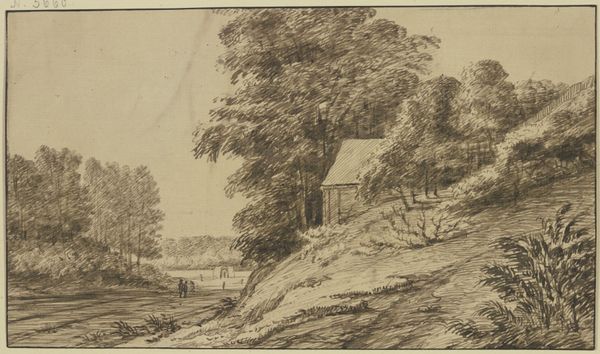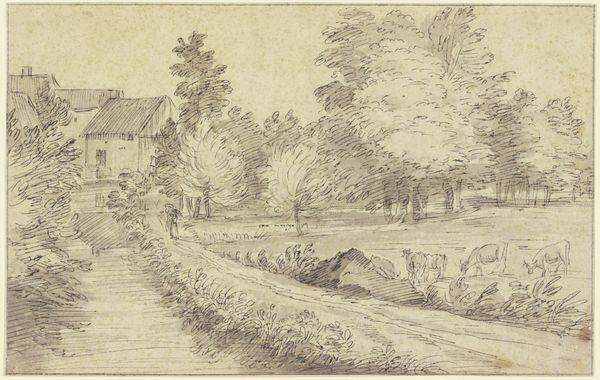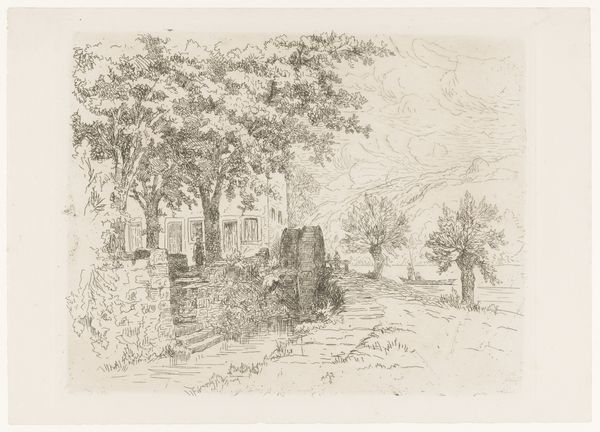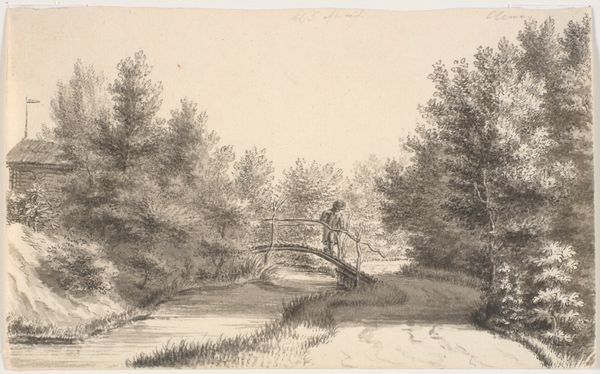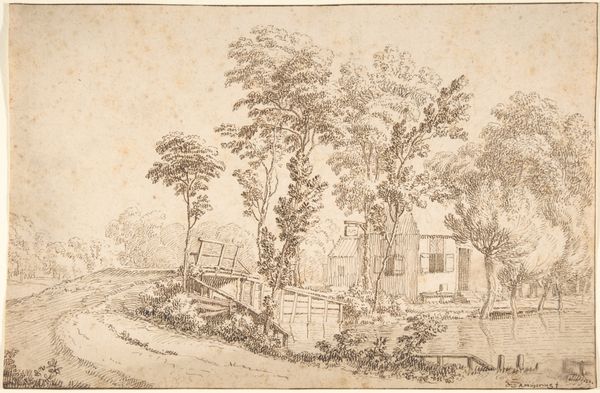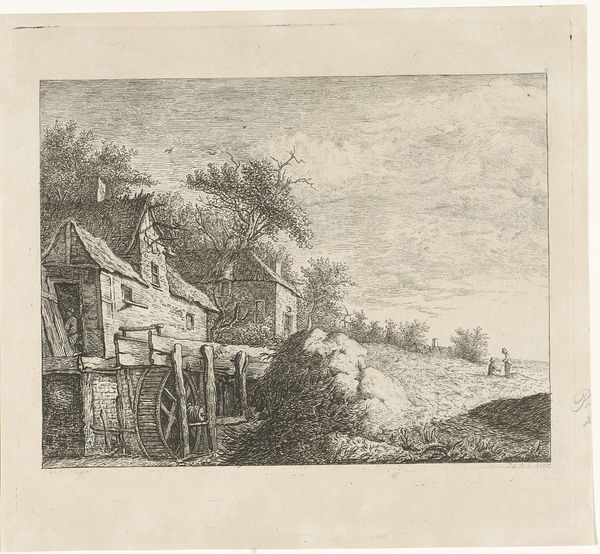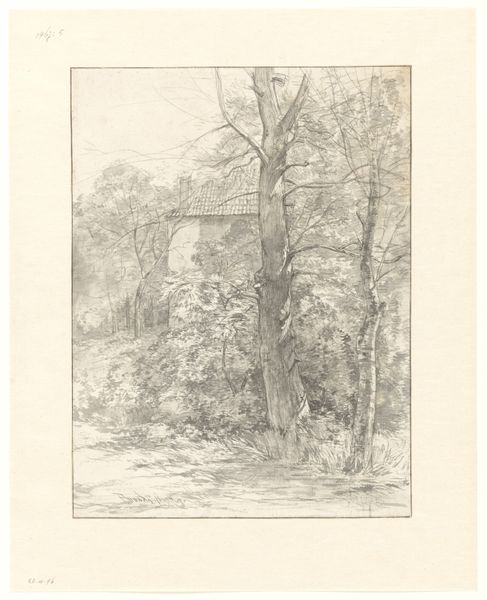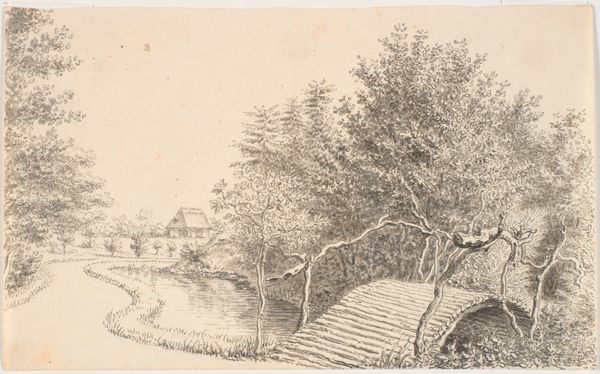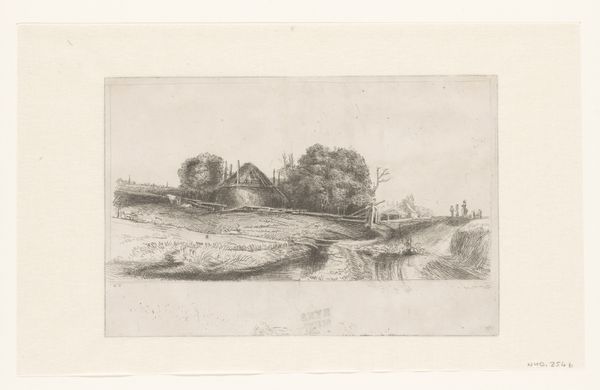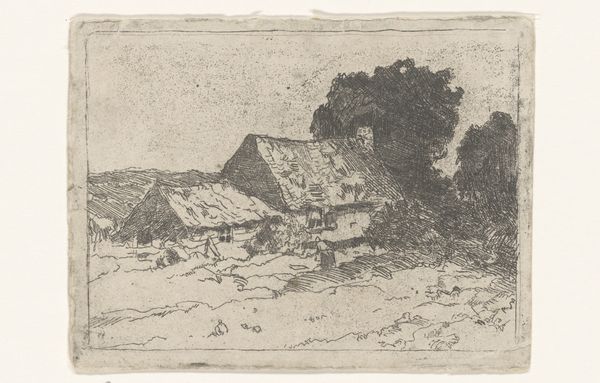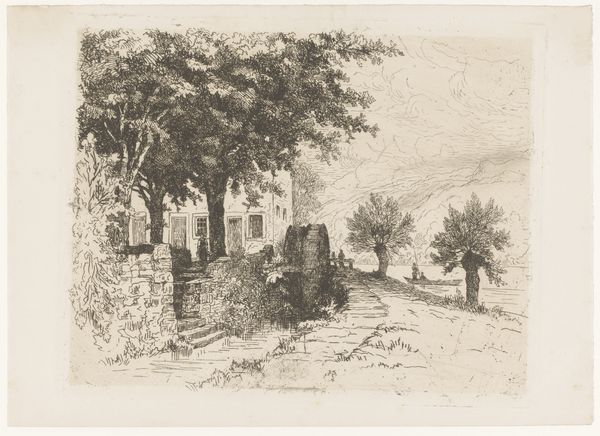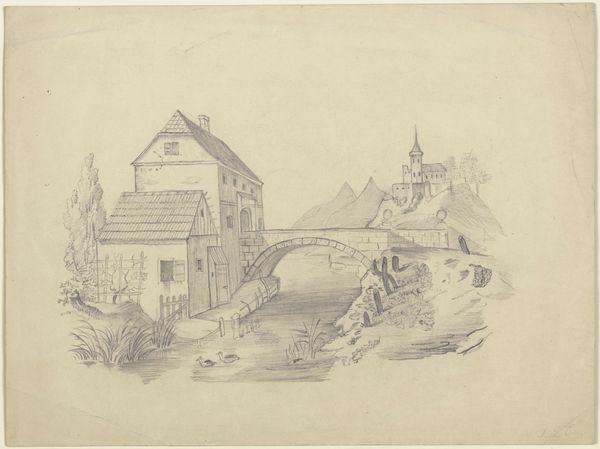
A House near a Grotto and a Roadside Chapel at Lake Nemi, with a View of Genzano from the North; verso: Sketch of Trees on the Border of a Lake, with Mountains in the Background 1798 - 1868
0:00
0:00
drawing, pencil
#
drawing
#
landscape
#
classical-realism
#
romanticism
#
pencil
#
cityscape
Dimensions: Sheet: 7 1/2 × 9 13/16 in. (19 × 24.9 cm)
Copyright: Public Domain
Editor: So, this is Johann Martin von Rohden's "A House near a Grotto and a Roadside Chapel at Lake Nemi, with a View of Genzano from the North," made sometime between 1798 and 1868. It’s a pencil drawing. The scene feels very… staged, like a theatre set. What strikes you about it? Curator: I see a layering of power structures embedded within this seemingly tranquil landscape. The composition positions the viewer outside, looking in, almost as an outsider. Notice how the architecture of the house and chapel contrast with the natural landscape. Do you see that tension? Editor: I do, now that you point it out. It's like the built environment is trying to dominate the natural one. Curator: Precisely. The Romantic era, while celebrating nature, often revealed the underlying human impulse to control and categorize it. The chapel, for instance, signifies not only religious authority, but also a claim on the land. The artist also made another drawing on the back – trees in the mountains. Maybe they wanted to give space to a freer rendering. Editor: That’s interesting, because that building feels less about God and more about the landowner staking a claim. Almost like a warning about who holds the power here. Curator: Exactly. Consider how this intersects with ideas of property, privilege, and even colonialism. These landscapes were never neutral; they were always implicated in complex power dynamics. What does this make you consider about other landscape art? Editor: This makes me question whose story the landscape paintings were really telling and whose perspectives were included and excluded. Curator: Indeed. Recognizing these subtle assertions is key to understanding the role of art in reflecting and reinforcing societal hierarchies. We are now positioned to interrogate images of serenity through more critical lenses.
Comments
No comments
Be the first to comment and join the conversation on the ultimate creative platform.
